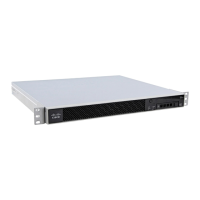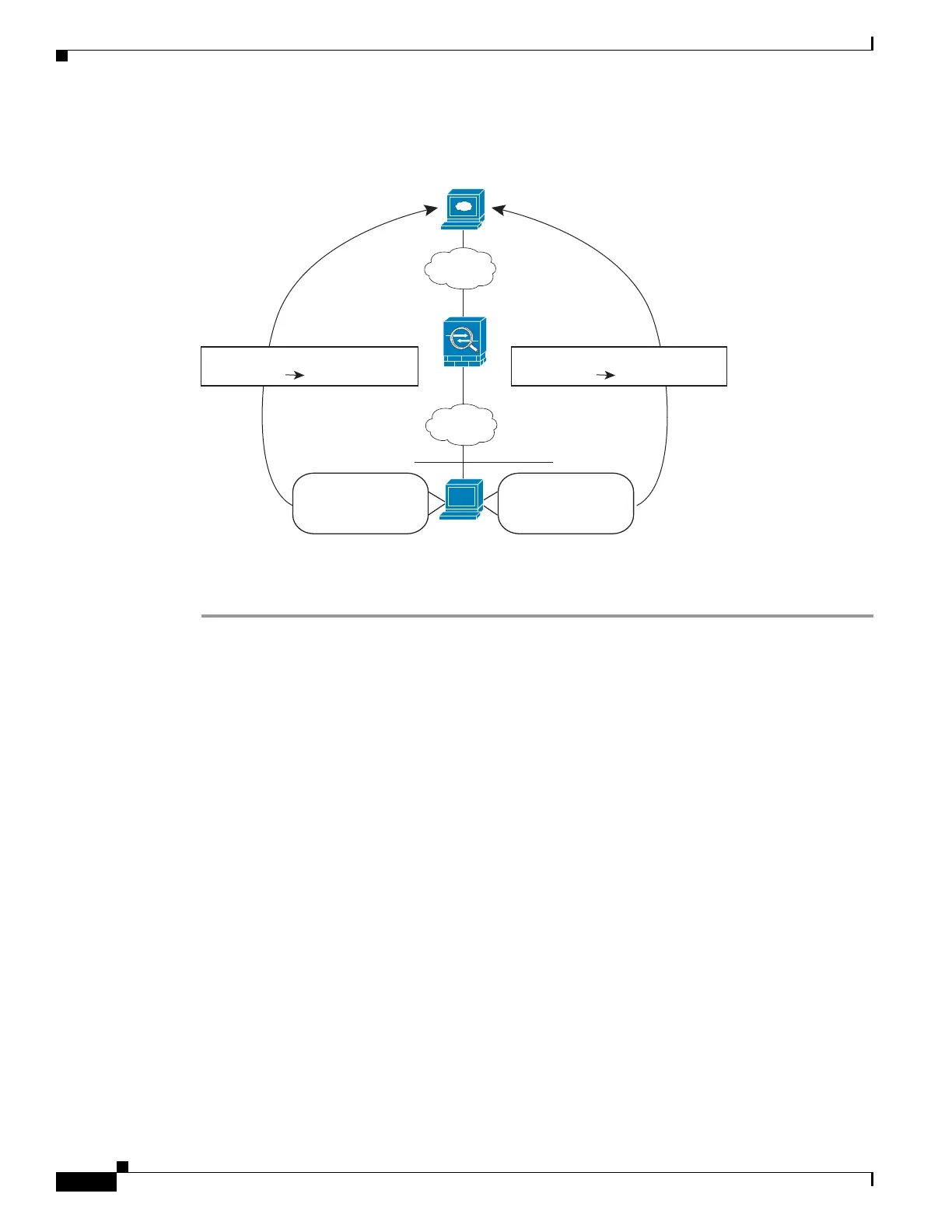10-8
Cisco ASA Series Firewall CLI Configuration Guide
Chapter 10 NAT Examples and Reference
Examples for Twice NAT
Figure 10-6 Twice NAT with Different Destination Ports
Procedure
Step 1 Add a network object for the inside network:
hostname(config)# object network myInsideNetwork
hostname(config-network-object)# subnet 10.1.2.0 255.255.255.0
Step 2 Add a network object for the Telnet/Web server:
hostname(config)# object network TelnetWebServer
hostname(config-network-object)# host 209.165.201.11
Step 3 Add a network object for the PAT address when using Telnet:
hostname(config)# object network PATaddress1
hostname(config-network-object)# host 209.165.202.129
Step 4 Add a service object for Telnet:
hostname(config)# object service TelnetObj
hostname(config-network-object)# service tcp destination eq telnet
Step 5 Configure the first twice NAT rule:
hostname(config)# nat (inside,outside) source dynamic myInsideNetwork PATaddress1
destination static TelnetWebServer TelnetWebServer service TelnetObj TelnetObj
Because you do not want to translate the destination address or port, you need to configure identity NAT
for them by specifying the same address for the real and mapped destination addresses, and the same
port for the real and mapped service.
Step 6 Add a network object for the PAT address when using HTTP:
hostname(config)# object network PATaddress2
hostname(config-network-object)# host 209.165.202.130
Web and Telnet server:
209.165.201.11
Internet
Inside
Translation
209.165.202.12910.1.2.27:80
10.1.2.27
10.1.2.0/24
Translation
209.165.202.13010.1.2.27:23
Web Packet
Dest. Address:
209.165.201.11:80
Telnet Packet
Dest. Address:
209.165.201.11:23
130040

